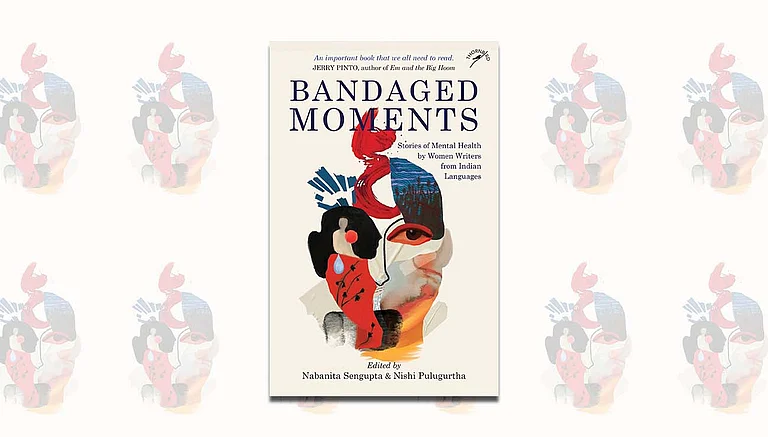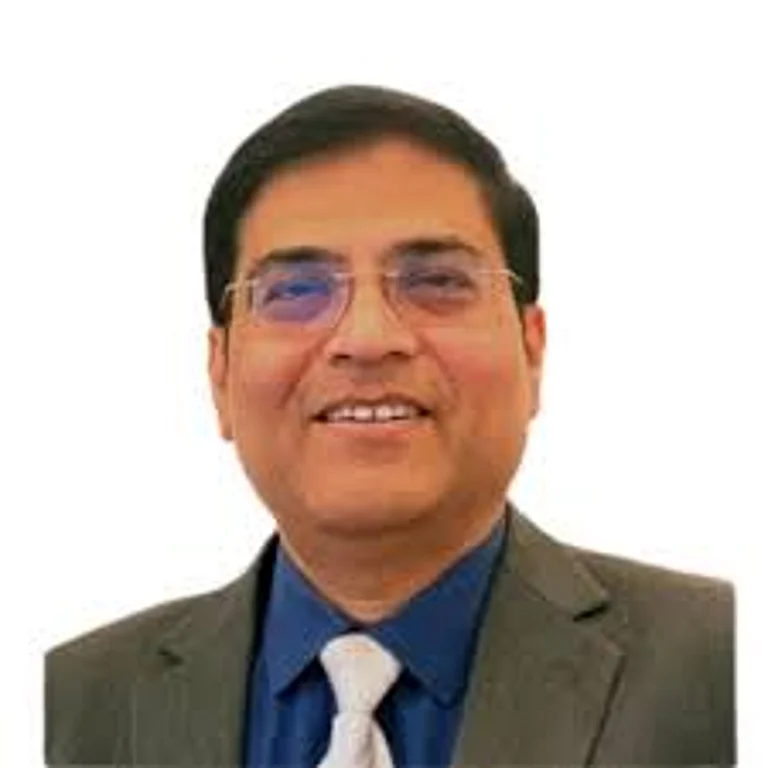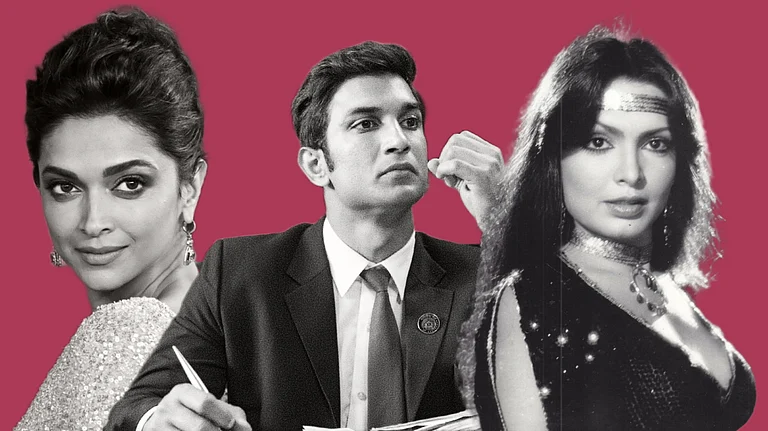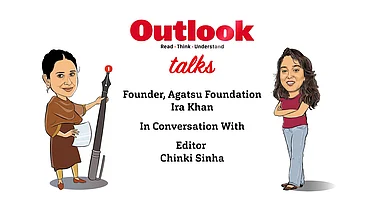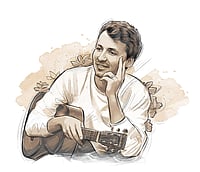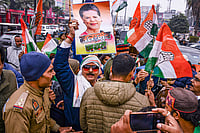Trigger Warning: This story contains mentions of suicide. Reader discretion is advised. If you or someone you know is struggling, please contact these numbers.
Helpline: iCall (9152987821) or AASRA (+91-22-27546669) — Available 24/7.

One in every two Indian women suffer from chronic stress, says 2025 Mpower survey.
The suicide ratio for women in India is 2.1 times higher than the global average.
Women who are not financially independent face an additional barrier: therapy costs are high.
When Tarini (name changed) got married, she was working at a leading professional services firm in Delhi. A year later, she was promoted to Senior Manager. The promotion was a highpoint, but her in-laws wouldn’t stop complaining. Their taunts about how little time she spent cooking and entertaining guests became a constant. “They would compare me to daughters-in-law of other families,” she says. “I always fell short. I was unfit to be [their only son] Saurabh’s wife.” Juggling her job and the criticism at home was tough. Tarini lost her appetite. She couldn’t sleep. It felt like she was “drowning in a dark sea” all the time. When she was diagnosed with severe depression, her husband and in-laws dismissed it as “just stress”, asking her not to make a fuss.
Tarini’s experience is not a rarity. According to the 2025 Mpower survey, one in every two Indian women suffer from chronic stress. Causes include societal expectations, financial concerns, and work-life balance issues. Depression and anxiety in women are twice as much as in men, affecting 25 per cent of Indian women. The suicide ratio for women in India is 2.1 times higher than the global average. Counselling psychologist Damini Grover says that the Mpower survey’s finding sadly aligns with what she sees in therapy rooms. Indian women are under enormous pressure to play many roles, and to play them perfectly: carer, career woman, daughter, mother, sister, spouse…“Women, often seen as the emotional anchors of the family, are expected to be nurturing and resilient, regardless of what they’re going through internally,” Grover notes. “This emotional labour goes largely unnoticed and unrewarded, leading to chronic stress, anxiety, and often a deep sense of loneliness.”
Women’s mental health is not a priority in many Indian households. Speaking freely about mental illness is still taboo. When women struggle, their concerns are often swept under the carpet, away from the gaze of relatives and nosy neighbours. Treatment is mostly sought only when something drastic like a breakdown or a violent outburst happens. The shame attached to mental illness makes it challenging for women to reach out for help. Stigma cuts across socio-economic classes, disproportionately affecting women than men. Grover points out that the fear of judgement, of being labelled, or of bringing shame to family ‘honour’ prompts many women to stay silent. “The stigma around women’s mental health is actually about control,” says Nilanjana Bhowmick, journalist and author of Lies Our Mothers Told Us and How Not to be a Superwoman. “From being asked to ‘calm down’ in workplaces or at home (as if women are perpetually irrational), to being punished in marriages for speaking up or seeking help—it is a way to diminish women; punish them and sometimes erase them.”
Then there is the question of access. Healthcare entails identifying the illness as a mental health issue, and the patient seeking treatment and going through with it. Some may need long-term care and rehabilitation, too. People from economically backward backgrounds lack the financial resources to invest in prolonged treatment. Also, symptom control without functional restoration is not seen as valuable or meaningful.
Speaking freely about mental illness is still taboo. When women struggle, their concerns are often swept under the carpet.
India has only around 0.75 psychiatrists per 100,000 people. The World Health Organisation recommends at least four times that number. There is also a need for more therapists and facilitators who understand women’s lived experiences and the stressors that affect them. Therapy doesn’t come cheap. Most therapists charge between Rs 1,500 to Rs 2,000 for a 30 to 45-minute session. “Women, even if they are financially independent, hesitate to spend that kind of money on themselves—because of the stigma but also because they are conditioned to never put themselves first,” says Bhowmick. “And if they are not financially independent (which most women are not in India), then they are dependent on their partner for their treatment.”
Gudiya’s mother works as a domestic help in a posh South Delhi residential colony. When Gudiya turned 18, her mother got her married to a man who owns a small grocery store in Kolkata. After the birth of their daughter, Gudiya started to suffer from extreme mood swings. “I would cry for hours…the tears kept coming,” says Gudiya, who lives with her mother now. “I also laughed a lot.” Ridiculed for having gone ‘mad’, she was carted off to a temple “far, far away” by her mother-in-law. But the priest couldn’t cure her, she says. Her husband took her to a hospital once, she remembers, but they had to wait in line for hours. He was furious about losing half-a-day’s earnings at his shop. No more doctors, he swore, having little hope that hospitals could cure a mentally ill person.
When women deviate from society’s norms, they are often written off as ‘mad’.
Lack of awareness about mental illness is a stumbling block—it prevents patients and their families from seeking treatment and seeing it through. It also reinforces the misconception that mental health diseases have no cure. Countering this conditioning is crucial. “We need to create emotionally safe, non-judgemental spaces both in communities and online where women feel heard, validated, and supported,” Grover suggests. “Schools, colleges, workplaces, and even residential communities must start integrating mental health education and access.”
Even when care is accessible, therapy can fail women sometimes. Therapists are not free from gender bias either. Many are trained in frameworks that overlook women’s caretaking burdens, emotional labour, and domestic abuse. In certain instances, treatment alone will not suffice. Rampari, a women’s rights activist with All India Democratic Women’s Association in Bihar who has helped several women when they were hounded for being witches, says healthcare access is crucial, but when a woman is accused of being a witch, it’s not treatment she needs first but social protection. “Without that, taking her to a doctor may break her further. She may start to believe it’s her fault.” Rampari recommends that the government run a focused programme on witch-hunting to help affected women who suffer from anxiety and are stuck in flight-or-fight mode. For these women, healthcare support, social protection, and legal assistance to file police cases are all equally important.
Indian women have certainly come a long way, but traditional gender roles still do hold sway. When a woman deviates from society’s norms, when she resists harassment by influential men, asserts her right to bodily autonomy, or raises claims to property, there is a tendency to write her off as ‘mad’ or ‘hysterical’. Women who reject traditional roles like that of the subservient wife or the self-sacrificing mother are also branded this way at times. Since the definition of appropriate behaviour is the one prescribed by society at any given point, “all deviations are outside of the norm and therefore equated with mental ill-health,” says clinical psychologist Nupur Dhingra Paiva, emphasising that careful assessment by open-minded professionals is key.
“In a patriarchal and casteist social order, the label of insanity can be easily imposed on certain gendered and marginalised bodies,” says independent academic Bindhulakshmi Pattadath. “Many feminist scholars like Bhargavi Davar have argued that psychiatry has been used as a tool of control to institutionalise women who resist patriarchal control.” It is the powerful and the privileged who set the standards of sanity and insanity, Pattadath points out.
A person can be institutionalised through legal and psychiatric processes. A psychiatrist who is registered with the medical council evaluates whether they pose a threat to themselves or to others. If admission is against the person’s will, it must go through procedures stipulated by the Mental Healthcare Act 2017, which includes safeguards and judicial oversight. Despite the safeguards, women are more vulnerable to forced institutionalisation due to gendered biases in diagnosis (women being deemed “emotional” or “unstable” more easily); financial dependency; lack of awareness of legal rights; and skewed power balance within the family hierarchy.
“If a woman is financially dependent, isolated, or emotionally overwhelmed, it becomes easier for others to silence her under the guise of ‘treatment,’” says Grover. When Bhowmick was researching Lies Our Mothers Told Us, she interviewed several women who had been institutionalised or forced/tricked into therapy, often by their in-laws. “Later, those very records were used to justify divorce, especially to avoid paying alimony,” she says, stressing that labelling a woman “mad” when she challenges control is not just cultural, but also deeply systemic. “And beyond the mental trauma, it carries very real, legal consequences for women.”
A host of systemic issues need redressal. Women’s mental health needs are different, and treatment outcomes vary depending on gender identity. A one-size-fits-all approach doesn’t work. It’s time to junk the toxic tradition of romanticising the stress that crushes women, to stop shaming them for struggling with mental illnesses, to let them get the help they need. “There’s a collective unlearning needed here: mental health isn’t a luxury, and it certainly isn’t optional,” warns Grover. “It’s time we reframe mental health not as a label, but as a human right—especially for women who have been silenced, stretched thin, or made to feel small.”
(With inputs from Pragya Singh)
*(Some names have been changed for privacy)
MORE FROM THIS ISSUE
Vineetha Mokkil is associate editor, Outlook. She is the author of the book A Happy Place and Other Stories.
In its August 21 issue, Every Day I Pray For Love, Outlook collaborated with The Banyan India to take a hard look at the community and care provided to those with mental health disorders in India. From the inmates in mental health facilities across India—Ranchi to Lucknow—to the mental health impact of conflict journalism, to the chronic stress caused by the caste system, our reporters and columnists shed light on and questioned the stigma weighing down the vulnerable communities where mental health disorders are prevalent. This copy appeared in print as The Stree Syndrome.








